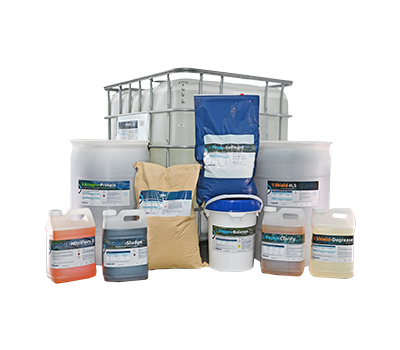Solutions
Cyanobacteria – Also Known as Blue-Green Algae
Cyanophyta
Cyanobacteria, also called blue-green algae, are microscopic organisms found naturally in all types of water. These single-celled organisms live in fresh, brackish (combined salt and fresh water), and marine water. These organisms use sunlight to make their own food.
Cyanobacteria blooms can start to multiply very quickly. Blooms can form in warm, slow-moving waters that are rich in nutrients from sources such as fertiliser runoff or septic tank overflows. Cyanobacteria blooms need nutrients to survive. Blooms can form at any time, but most often form in late summer or early Autumn.
How can you identify it?
You might or might not be able to see cyanobacteria blooms. They sometimes stay below the water’s surface, and sometimes float to the surface. Some cyanobacteria blooms can look like foam, scum, or mats, particularly when the wind blows them toward a shoreline. The blooms can be blue, bright green, brown, or red. Blooms sometimes look like paint floating on the water’s surface. As cyanobacteria in a bloom die, the water may smell bad, similar to rotting plants.
Every lake is different, find out what program works best for you.
Check your pond
Did you know?
Cyanobacterial blooms are a significant public health issue, particularly in summer Cyanobacteria (blue-green algae) produce a variety of toxins such as hepatotoxins, neurotoxins and dermatoxins which are detrimental to human and animal health.


